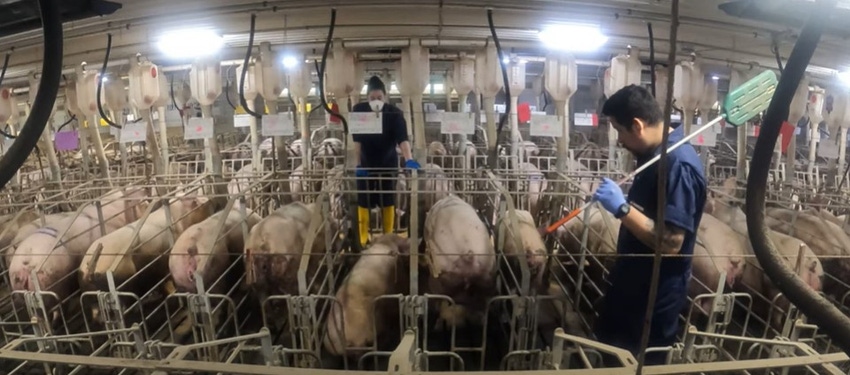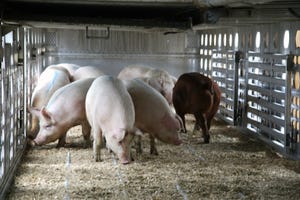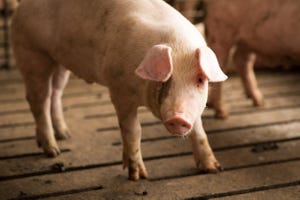Take a practical approach to reduce sow mortality
Iowa Pork Industry Center offers an SOP for caretakers to use while conducting their daily observations.

With 2023 sow death loss reaching a record high level, implementing a program to assist producers and caretakers in early identifying at-risk sows should be a critical component of any sow farm’s SOP. These few extra steps can also improve a producer’s bottom line.
According to Chris Rademacher, a clinical professor in veterinary medicine at Iowa State University, when Iowa Pork Industry Center’s evaluation method was recently utilized in a commercial sow facility, annualized sow mortality was reduced from 16.75% to 12.5%, a 4.25% drop, saving that producer approximately $50 per sow or $2 per weaned pig.
The program requires two caretakers spending approximately two hours per day identifying at-risk sows, and then at least one caretaker following up with treatments for approximately 1 hour per day. However, Rademacher says time equivalents may vary based on herd size and the number of barns or rooms being evaluated. The program takes advantage of herds with drop feed systems that feed once per day to identify females who don’t get up to feed once feed is dropped.
“The key to this program being successful is to repeat this procedure daily,” Rademacher says.
Evaluations begin when both caretakers are walking through the barn simultaneously, with one caretaker in front and the other in the back. After the feed has dropped, Rademacher says it's important to quickly execute the evaluation to avoid missing any sows that have laid back down after eating.
“Generally, you have about 30 minutes per barn from the time that the first feed is dropped before sows start laying back down,” Rademacher says. “The caretakers during that time will flag any sow that does not immediately get up by placing a card above her stall. Sows that are flagged are to be evaluated further at a later time that's more convenient by the farm staff.”
For example, a sow that continues to lay down and won’t get up or eat any of the allotted feed, would need to be flagged for further evaluation. If the caretaker is able to, he or she should then gently get the sow up to quickly determine why she's not eating with the rest of the herd.
“If she stands up then the caretaker should examine her weight distribution between her legs. Look for signs of toe tapping, redness, or swollen joints, any lesions, or any discharge from her genitalia, or bleeding,” Rademacher says.
All sows should then be treated based on the herd veterinarian’s recommendations based on their suspected findings.
For group house gestation pens, the instructions are similar to gestation stalls, however evaluations may require two to four people to make the observations, depending on facility design, Rademacher says.
“This allows one to two individuals to walk into the pens to observe, move around, and evaluate the sows, and another one to two individuals to evaluate and observe the sows from outside the pen,” he says.
To easily identify sows that need to be observed further, sows should be flagged with a unique marking, such as a small mark on the head that is different than any other marking used on that farm, and cards should still be placed outside the pens. All sows should then be treated based on the herd veterinarian's recommendations based on the suspected ailment.
When implementing this program, Rademacher says it's beneficial to involve your veterinarian or senior production personnel during the first week to help the barn staff learn how to identify at-risk sows.
“It's important to recognize that females that have difficulty getting up may suffer from front leg lameness, even though they may not easily show it,” Rademacher says.
"Other important considerations are identifying when sows are in estrus. It can be difficult to interpret off-feed events shortly after weaning or around the time of breeding. And during this time, the gilts are more often off feed and for longer time periods than for sows.”
Training videos and standard operation procedures, along with other resources, are available at the Pig Livability website.
About the Author(s)
You May Also Like





